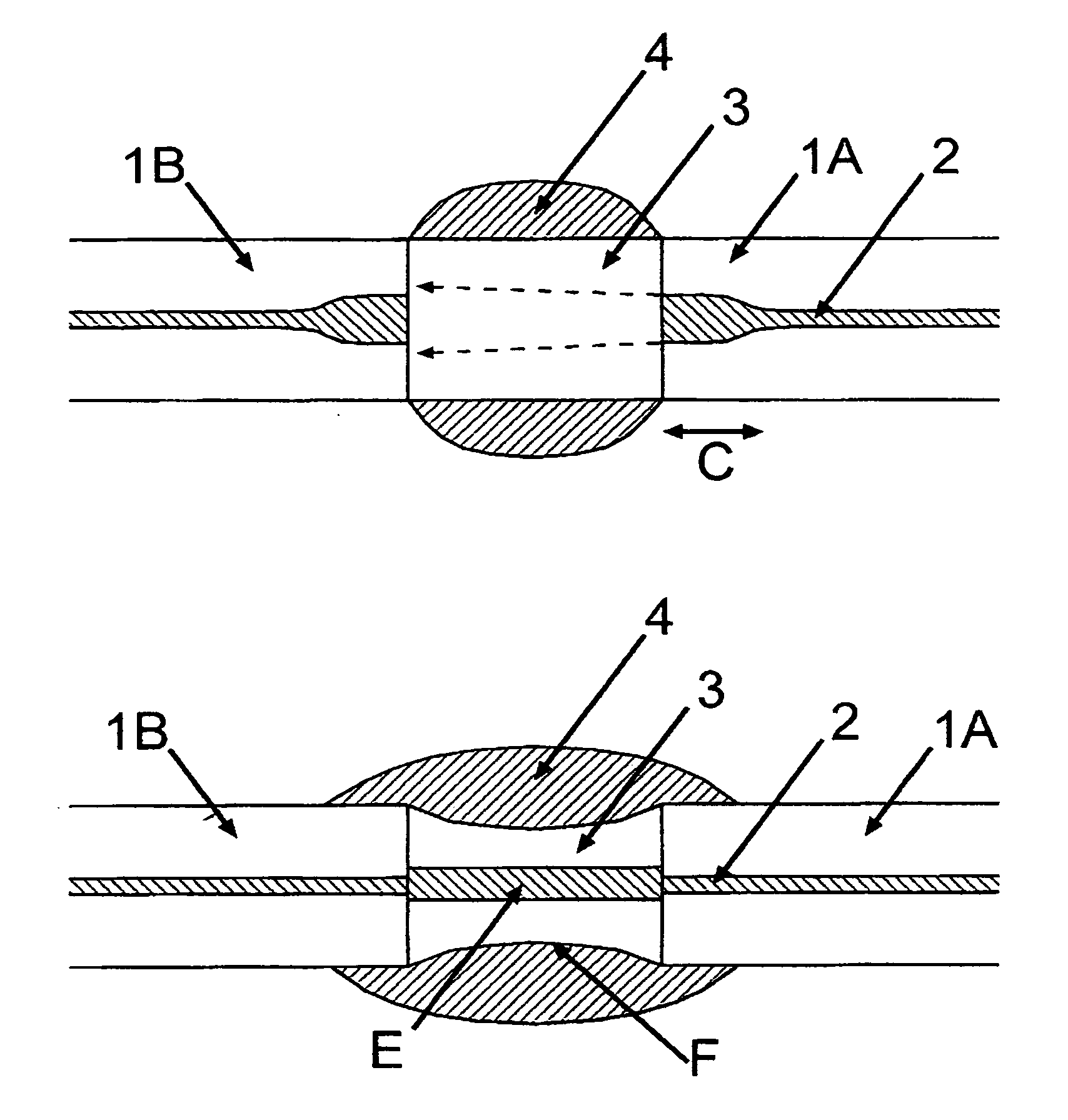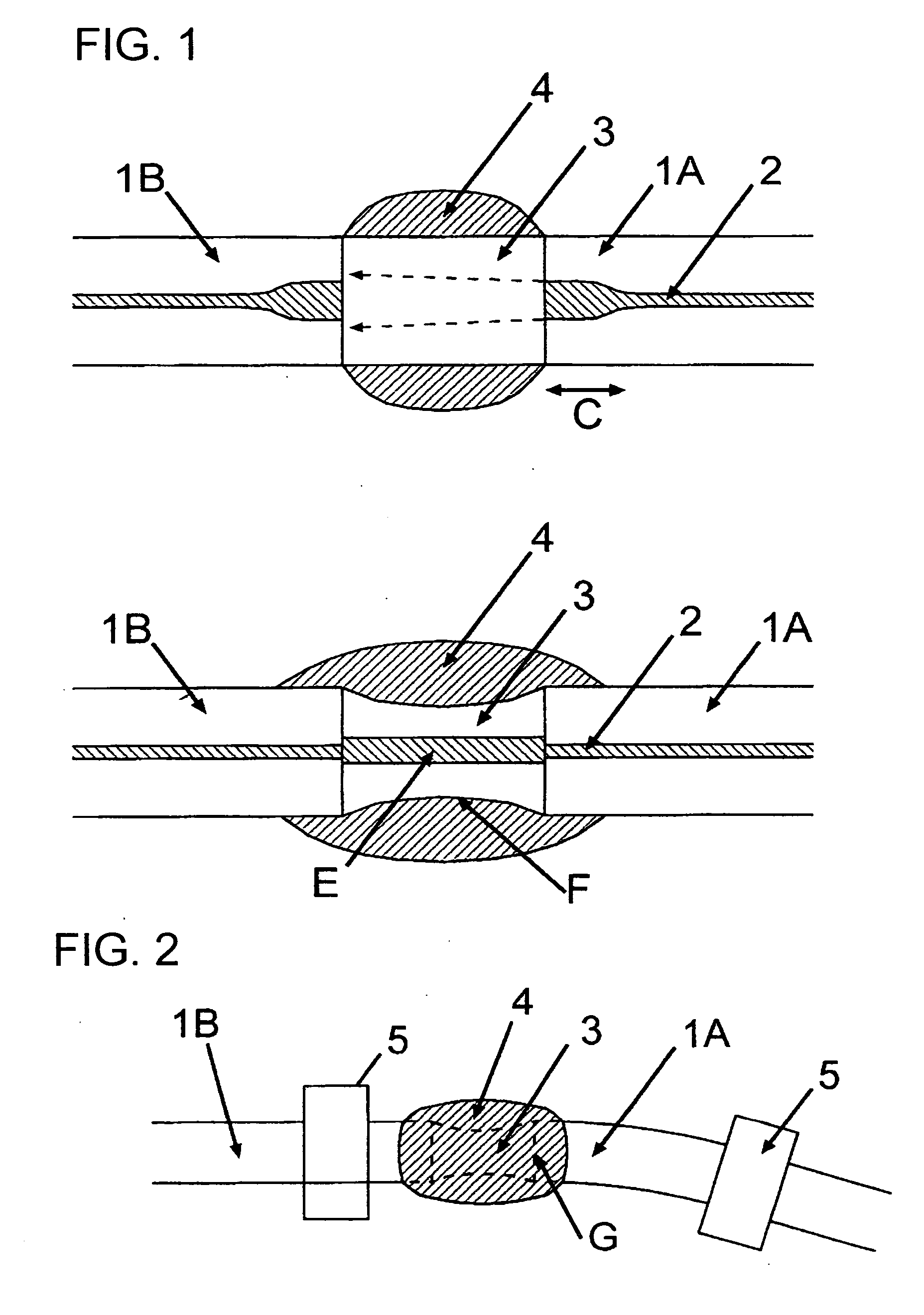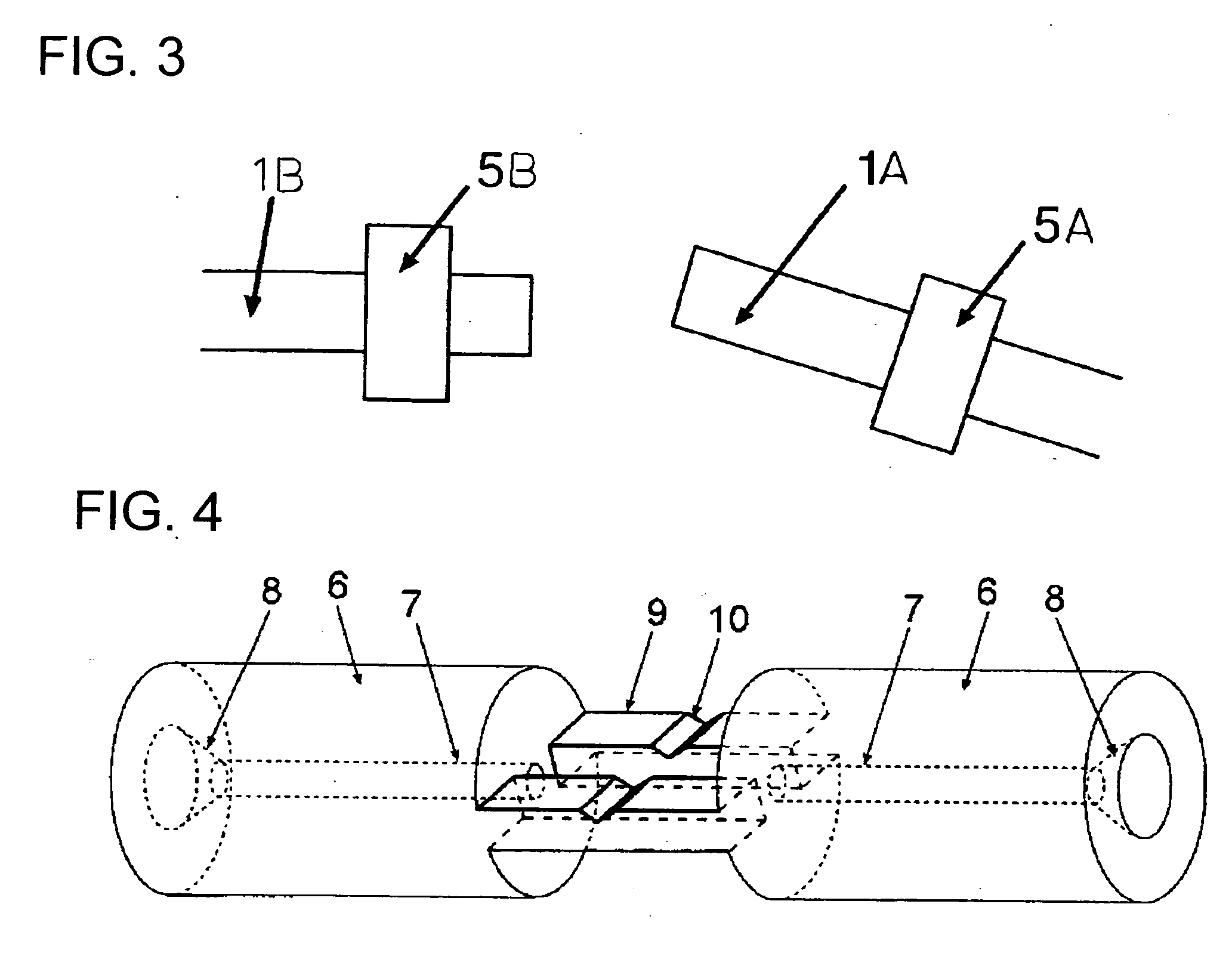Optical fuse and component for fabricating optical fuse
- Summary
- Abstract
- Description
- Claims
- Application Information
AI Technical Summary
Benefits of technology
Problems solved by technology
Method used
Image
Examples
example 1
[0048] A light-emitting end of one optical fiber and a light-incident end of another optical fiber were arranged in opposed relation to one another, and a small amount of TeO2 molten liquid was inserted between the two ends. The inserted molten liquid was formed to allow an intermediate portion thereof to be constricted, and then cooled. This shape was formed by scraping a part of the liquid droplet using the two optical fibers. This technique is disclosed in Japanese Patent Laid-Open Publication No. 2003-57482 (Method and Apparatus for fabricating Glass Composite Material). When light was entered from one of the optical fibers, a light output was observed from the other optical fiber. Thus, it could be verified that an optical coupling was established through a medium composed of the transparent TeO2 glass interposed between the optical fibers. Then, a commercially available black water color was applied onto an outer peripheral surface of the TeO2 glass medium to cover over the ou...
PUM
 Login to View More
Login to View More Abstract
Description
Claims
Application Information
 Login to View More
Login to View More - R&D
- Intellectual Property
- Life Sciences
- Materials
- Tech Scout
- Unparalleled Data Quality
- Higher Quality Content
- 60% Fewer Hallucinations
Browse by: Latest US Patents, China's latest patents, Technical Efficacy Thesaurus, Application Domain, Technology Topic, Popular Technical Reports.
© 2025 PatSnap. All rights reserved.Legal|Privacy policy|Modern Slavery Act Transparency Statement|Sitemap|About US| Contact US: help@patsnap.com



